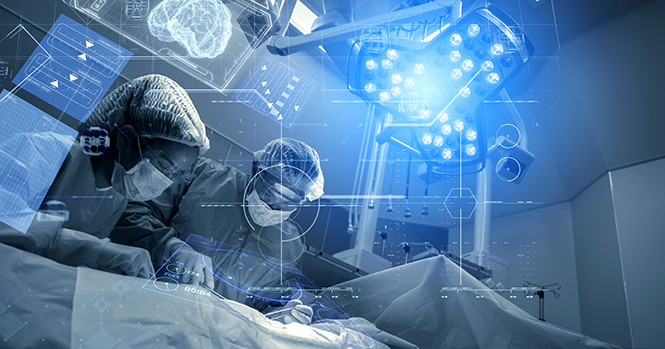In this issue of the AANS Neurosurgeon, we explore the role of technology within our field. Neurosurgeons have a long history of creativity, innovation and the utilization of technological devices to advance the field and improve patient outcomes.
Since the onset of the global pandemic, our relationship with technology has changed. For the general public, technological devices have enabled people to stay connected to family, friends and colleagues in this era of social distancing and working from home. For neurosurgeons at various points in their career, the use of technology during this time has enabled us to continue to practice our art. The rapid initiation of telehealth medicine as a means to evaluate, triage, diagnose and treat patients has been invaluable. For younger colleagues, the use of technology has provided a means to maintain neurosurgical knowledge and skills during a time of reduced operative volume.
This issue’s contributors touch upon these varied applications of technology to the field; both augmented and virtual reality are part of the educational toolkit used to teach medical students, residents, fellows and patients. Technological advances, such as the various robotic assistive devices, only serve to increase surgical accuracy and safety in an attempt to improve patient outcomes. Finally, the next frontier, or perhaps the next subspecialty area of the field, is on the cusp of explosion — the use of the brain-computer interface.
Over the past few years, AANS Neurosurgeon has expanded the footplate of its medical student section; more recently, the publication has increased the participation of resident members. The involvement and engagement of our younger colleagues during this time of innovation, evolution and change will no doubt lead to an exponential expansion of our field.
The Technology Issue
Using Technology in Neurosurgical Education: Application of Educational Theory
Jason Boulter, MD | Christopher Neal, MD, FAANS | Anita Samuel, PhDNeurosurgery in 4D: A Meditation on the Future of 3D Modeling Technologies for Clinical Neurosciences
Christopher Graffeo, MD, MSImpact of Brain-computer Interfaces on Human Identity: Early Findings
Daniel J. DiLorenzo, MD, PhD, MBALearning Together: Medical Student Education
Roger Murayi, MDVirtual Reality: The Future of Medical Education
Kerrin Sunshine, MDKeeping Up with the Neurosurgeons
Kathryn Ko, MD, MFA, FAANS(L) | Simon R. Downes, MD, PhD








